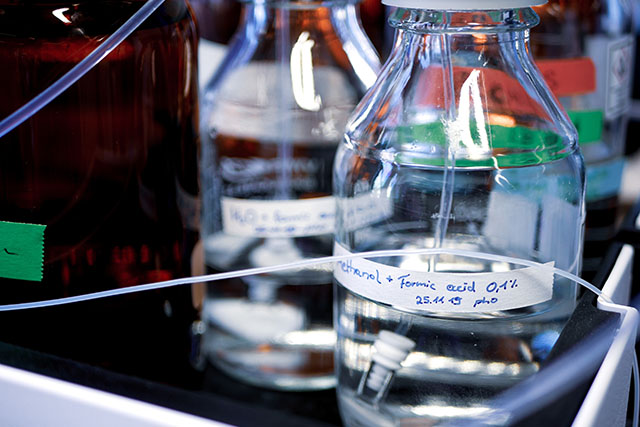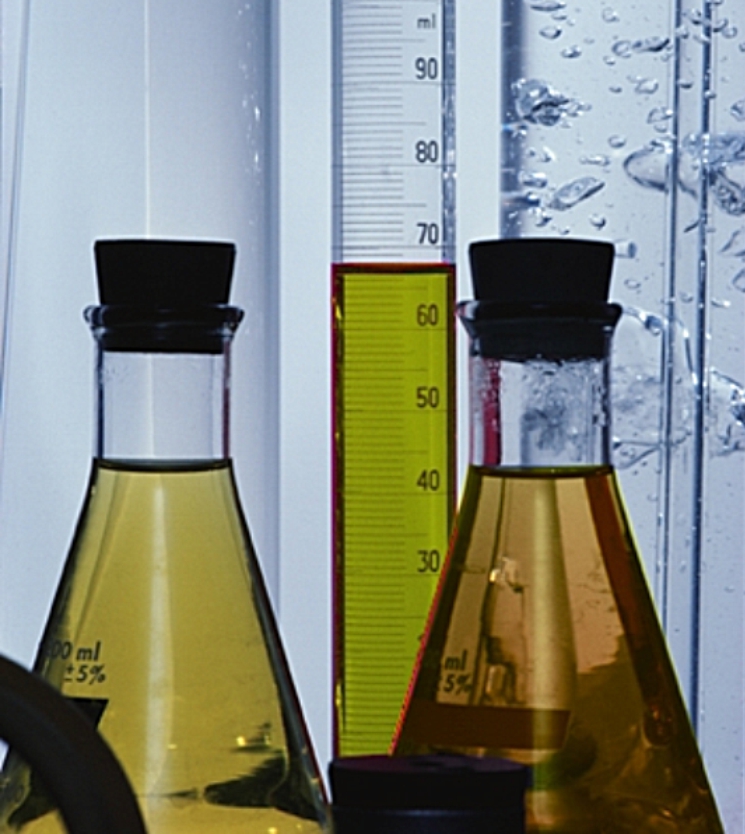

QUALITY
Quality has always been a major concern for Materia. Our products have been a success from the very beginning due to their remarkable purity, stability, and uniformity, which have been the basis of our international success.
It is not just "the quality of their products" what makes Materia a "supplier of quality". It is the understanding of our customers' particular needs, and what the company does to achieve their satisfaction. We are willing to go the extra mile to meet every particular requirement, including developing tailor-made products or services.
To demonstrate our commitment to quality service and customer satisfaction we obtained the certification ISO 9001 - www.sgs.com/certifiedclients para la Producción y comercialización de productos oleoquímicos básicos.


METHODS OF ANALYSES
Our Methods of Analysis are based on the Official Methods of the American Oil Chemists' Society (AOCS).As a reference guide, you can see the corresponding methods below:
Titer: It measures the solidification point of fatty acids. The sample is cooled down until it reaches a point where the temperature remains constant for a few seconds, and then begins to rise. The titer point is the highest temperature indicated by the thermometer during this rise.
Acid Value: It represents the number of milligrams of potassium hydroxide (KOH) needed to neutralize the free acids in a 1-gram sample.
Iodine Value: It is a measure of the unsaturation of fatty acids, and is expressed in terms of the number of centigrams of iodine absorbed per gram of test sample (% of iodine absorbed).
Saponification Value: It represents the amount of alkali required to saponify a definite quantity of the test sample. It is expressed as the number of milligrams of potassium hydroxide (KOH) required to saponify a 1-gram sample.
Unsaponifable Matter: unsaponifiable matter includes those substances frequently found dissolved in fats or oils, which cannot be saponified by the usual caustic treatment, but are soluble in ordinary fat and oil solvents.
Color of Fats and Oils, Lovibond Method: this method determines color by matching the color of light transmitted through a specific depth of liquid fat or oil (usually 5 ¼ inches) to the color of light originated from the same source, transmitted through glass color standards. The Lovibond Tintometer scale consists of red, yellow, blue, and neutral colored readings, although the red and yellow ones are the most commonly used. This method is the internationally accepted standard for color measurement in animal and vegetable fats and oils.
Gas Chromatography: It is the derivatization sample (fat or fatty acid) to form fatty acid methyl esters for gas-chromatography analysis to determine the percentage of each fatty acid (chain distribution).

